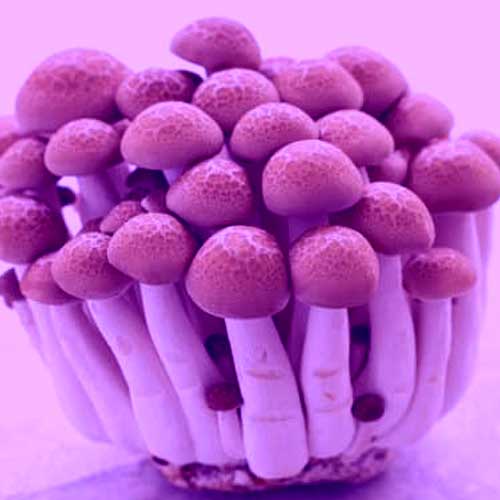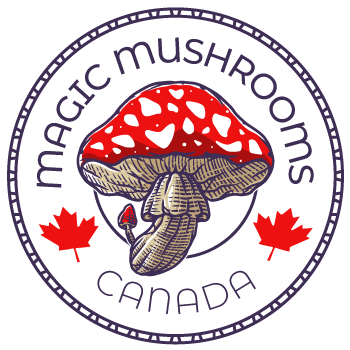There are almost 200 different species of psilocybin mushrooms, including some of the most widely known psychedelic substances like the psilocybe cubensis and psilocybe medixana. They grow in different parts of the world, and we have selected a list of shroom strains that we feel you should know, especially if you wish to buy shrooms online.
Psilocybe cubensis
You might have probably eaten magic mushrooms, but couldn’t figure out what species it was, it is possibly a strain of Psilocybe cubensis. The reason is that “cubes” are easily cultivated indoors. Due to many years of careful home cultivation, there are now about 60 different strains of P. cubensis. Clinical trials of psilocybin in the treatment of mental health diseases have been promising where subjects were given laboratory synthesized psilocybin. Although successful, these trials are not enough to produce adequate reasons why all magic mushrooms can be administered for healing purposes. The indoor-grown strains are more effective when it comes to their application compared to ones found in the wild. The reason is that they’ve grown for strength therefore every required factor is provided unlike the ones picked in nature. Countries like the southern US, Mexico, South America are places where you can easily find cubensis. You can also find them in Cuba, Southeast Asia, India, Australia. It’s important to note that, cubensis prefer to grow on dung or any other well-manured soil at any time of the year. Buy shrooms Canada by clicking here.
In the mushroom identification guide written by Paul Stamets, he refers to P. cubensis as “the most majestic of the Psilocybes” because of their easy-to-recognize size and golden color. Like all Psilocybes, P. cubensis’ color depends on its level of hydration and they turn blue when jandled because of the oxidization of psilocin(basically being exposed to oxygen). Cubensis is quit different from other Psilocybe species because of its size and how the mushroom cap gets wider as it gets more mature.
Paul Stamets in one of his books titled mushroom identification guide stated that P. cubensis is the most vast of all other mushrooms because they’re very easy to identify by size and color. The color of P. cubensis is determined by the hydration level. Incredibly large size and excellent ever-widening cap make P. Cubensis stand out among all other species of mushroom. More psychedelics with promising experiences are available, check-in today to buy shrooms online by clicking here.

Psilocybe semilanceata
Psilocybe semilanceata are the most widespread naturally existing psilocybin mushroom in the entire world according to Psilopedia. Not just that, they’re also the third most effective according to the tests carried out in 1997 by Paul Stamets and Jochen Gartz, a German mycologist.
P. semilanceata was identified in 1838 and is the first psilocybin mushroom that’s native to Europe. This species remains popular and widespread, especially in England, where it was first reported that a family tripped out on them.
Liberty caps, which are also called Witch’s Hats, grow wildly all over the Northern region. They prefer to thrive on rich acidic soil, like grasslands, pastures, and meadows, especially ones that have been fertilized with animal manure.
Liberty caps are miniature and can take on the color of the grass because their stems are only 40 to 100 mm long. They’re the smallest out of the topmost potent psilocybin mushrooms. Their shape is either conical or bell-like and they reportedly taste like flour. They’re very difficult to grow indoors so most of the liberty caps you see are picked from the wild. Care should be taken when picking them so that you don’t mistake them for other poisonous strains that grow in the same area.
Psilocybe azurescens
P. Azurescens are the strongest of all psilocybin species that grow in the wild. They became official species when Paul Stamets found them in 1996 and got his discovery published.
Azurescens is only available on the West coast of the U.S. from California to Washington. They love to live in sandy soils, like near dunes, seagrasses, and decaying wood. They can survive under chilly temperatures, unlike other psilocybin-containing mushrooms, from 16 to 24° C (60 – 75° F). Another good thing about them is that Azzies are easy to cultivate indoors. Note that they taste very bitter. Not to mention, Azzies have the potential of causing paralysis after consuming higher doses. Our magic mushrooms can never disappoint you, feel free to buy shrooms Canada today by linking up through our website.
Psilocybe tampanensis
Psilocybin tampanensis produces truffles, also called “sclerotia,” which has psilocybin. Many know these truffles as philosopher’s stones or magic truffles. Many like to cultivate and eat just the sclerotia, which contain about 0.68 percent psilocybin and 0.32 percent psilocin, according to Stamets’ book.
The trip experienced with magic truffles is similar to other psilocybin-containing mushrooms, but depending on the dose, kind of less intense. Like all magic mushrooms, the trip largely has to do with the person, the dose, their experience, and the set and setting surrounding the user.
(You can get more tips on how to take shrooms in our guide, and if going deeper is what you want, we have a class that will walk you through every step of your shroom trip.)
Psilocybe zapotecorum
Psilocybe zapotecorum is another species from Mexico that has both present and ancient ceremonial use. It’s rampant among the inhabitants of Zapotec and thought to be the mushroom in most of the ceramic mushroom statues dating back to ancient times. Zapotec language refers to P. zapotecorum as “Bado, Badao, and Badao Zoo,” which means drunk mushroom or even drunk god. Psilocybe zapotecorum has also been found outside of Mexico in subtropical South America, comprising Colombia, Brazil, Peru, and Argentina.

Psilocybe cyanescens
Psilocybe cyanescens is called Wavy Cap mushroom because of the rippled shape of its cap. Wavy Cap mushroom was first formally discovered in 2946 by Elsie Wakefield in England. They’re known to originate from Central Europe and the Pacific Northwest, but that’s hard to establish because they are now number among the most widespread wild psilocybin-containing mushrooms in the globe. They adapt well to woody debris, like the wood chips and mulch, and parks. P. cyanescens is believed to have widely spread around the globe.
Copelandia cyanescens
Copelandia cyanescens shrooms are often called “Blue Meanies”. This can be confusing since another strain of Psilocybe cubensis is called Blue Meanies. However certain differences exist, with these shrooms being part of the strongest in the world, having about two to three times the amount of psilocybin and psilocin.
Copelandia cyanescens thrive abundantly in dung in soil with warmer, subtropical climates. Therefore, they are present in the states of Hawaii, but also in the Caribbean States, Africa, and Europe (including France and Spain). Panaeolus cyanescens shares huge similarities with Panaeolus tropicalis, which also has psilocybin and grows in similar dung-loving environments.
Psilocybe caerulescens
Psilocybe caerulescens is grown naturally in Mexico, and it is locally referred to as “Derrumbes”. This shroom species was initially reported by a community in Alabama, in 1923. This species can still be found in Georgia and South Carolina. Derrumbes are still very much in use for ceremonial events by the Mazatec people of Oaxaca in Mexico. A simple reason for this is that they are very resilient to the extremely low temperature and great altitudes in this region. They are very small stemmed having stems that range from about 40 to 120mm. Another feature is that it has an average potency, meaning trips can be shorter than other magic mushrooms.
Psilocybe mexicana
Psilocybe mexicana has great history. It is generally believed that this species was used ceremoniously by the Aztec or Nahuatl people in an event known as “flesh of the Gods.”
Psilocybe mexicana still thrives in Mexico especially in the rainy season in the states of Oaxaca, Puebla, and others. The species is rampant at high altitudes between 1000 and 1800 meters and prefers to live in deciduous forests, and soils rich in manure, but never directly on dung.
Psilocybe caerulipes
Psilocybe caerulipes, also known as the Blue Foot Mushroom, is a very rare mushroom that can be grown in the US. Its real wood-loving finds abode around decaying hardwood.
Blue Foot mushrooms are well named for their unique appearance: They possess a blue-hue at the rare of their stem.
Psilocybe stuntzii (Blue Ringer Mushroom, Stuntz’s Blue Legs)
Psilocybe stuntzii is found to be a rarely grown psilocybin mushroom that is only available on the West Coast of the US and Canada. Dr. Daniel Stuntz named it after it was first identified on the University of Washington’s campus. This strain gained it nicknames of “blue ringer” and “blue legs” because of the way it turns blue when handled. Also wood-loving, but can also be found in grassy areas. The warning involves that blue ringers look much like another species of mushrooms which is very toxic. So attention should be paid to every detail about the species of mushroom you’re collecting.

